Final Year Students from School of Electrical and Electronic Engineering, USM Excel in IMDC 2017
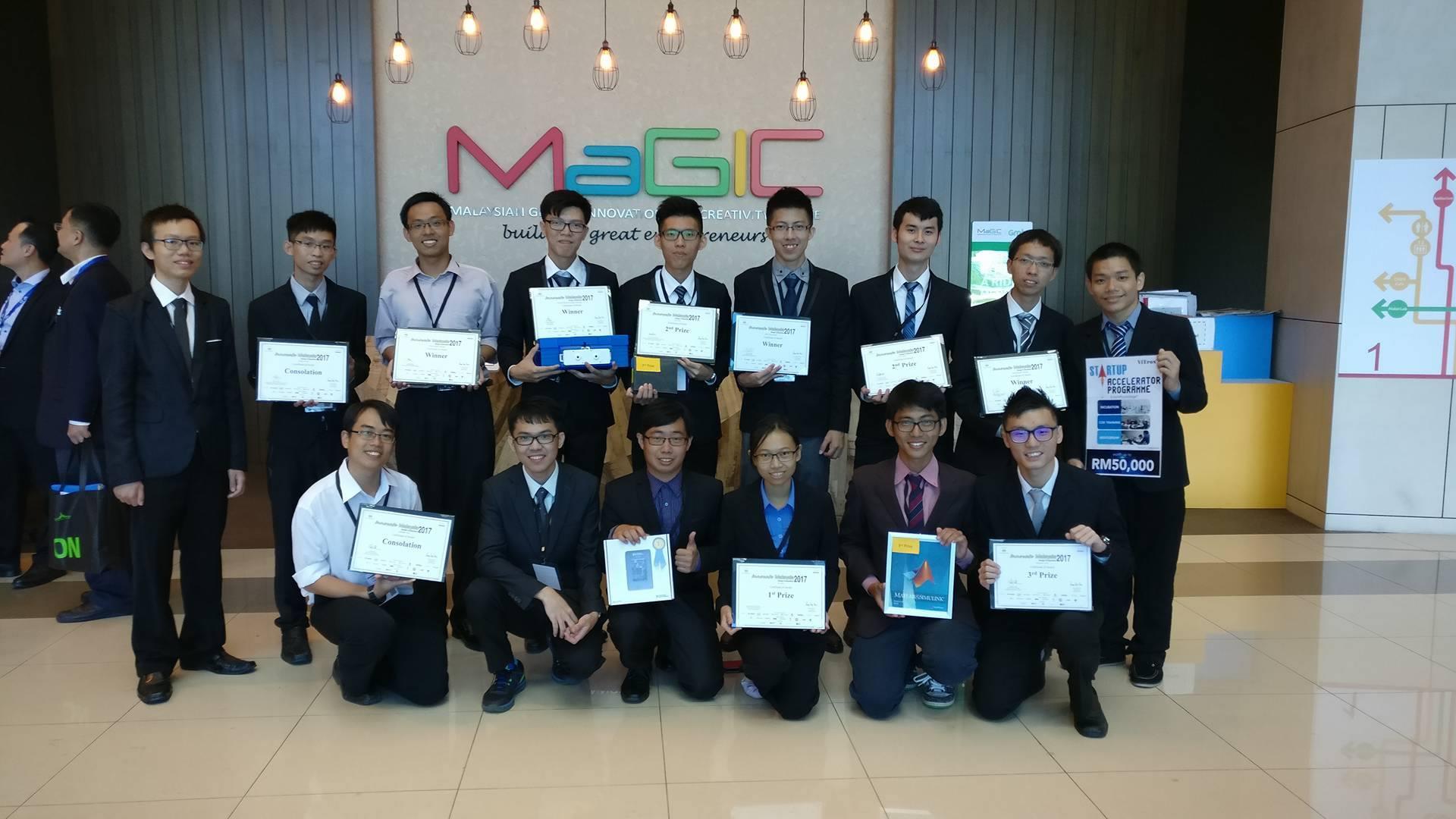
Photo of all the winners from SEEE, USM
Innovate Malaysia Design Competition (IMDC) 2017 is one of the largest engineering design competition in Malaysia, which is opened to all final year undergraduate engineering, computer science, and science/mathematics students. The goal of the competition is to promote innovative culture in engineering design work, tackle real-world problems with practical engineering solutions, and churn out brightest talents for product development, further research, and commercialization. Technology companies include Fusionex, Intel, Keysight, MathWorks, Microsoft, Motorola Solutions, National Instruments, SilTerra, and ViTrox, work together to co-organize the competition.
The competition, which saw the participation of over 600 students this year, received support from the Ministry of Higher Education (MOHE), Malaysia Digital Economy Corporation (MDEC), Malaysian Global Innovation and Creativity Centre (MaGIC), and the Institution of Engineers Malaysia (IEM). USM students also took up a challenge and participated in this competition. Among all, 5 teams which representing the School of Electrical and Electronic Engineering secured a total of 8 prizes in IMDC 2017 challenge.

From left: Ng Mun Kit, Wong Hong Loon and Yap Yee Yang
Yap Yee Yang, Wong Hong Loon and Ng Mun Kit won the DreamCatcher Best Demo Video Award, Intel Track Second Prize and TM Design Challenge under the supervision of Assoc. Prof. Dr. Khoo Bee Ee and Dr. Mohamad Khairi Ishak with a project titled “Artificial Eyes (Intelligent Blind Assistance)”.
“Artificial Eyes” is a project specially designed and built to assist the people who are visually impaired. By the implementation of stereoscopic image processing, it is able to detect obstacles in front of the blind and notify them by the vibrators installed on “Artificial Eyes”. It is capable of overcoming the weakness of white cane and guide dog. Moreover, it is able to assist the blind to recognise objects. By applying deep learning with convolution neural network, “Artificial Eyes” can recognise up to 1000 objects with 94% accuracy. In addition, “Artificial Eyes” can also provide emergency response service as it can connect to a hotline centre and communicate with the officer to seek for help through the internet. It is able to provide live video streaming and audio communication so that the officer can help the blind efficiently. “Artificial Eyes” improves the quality of life of the people who are visually impaired.
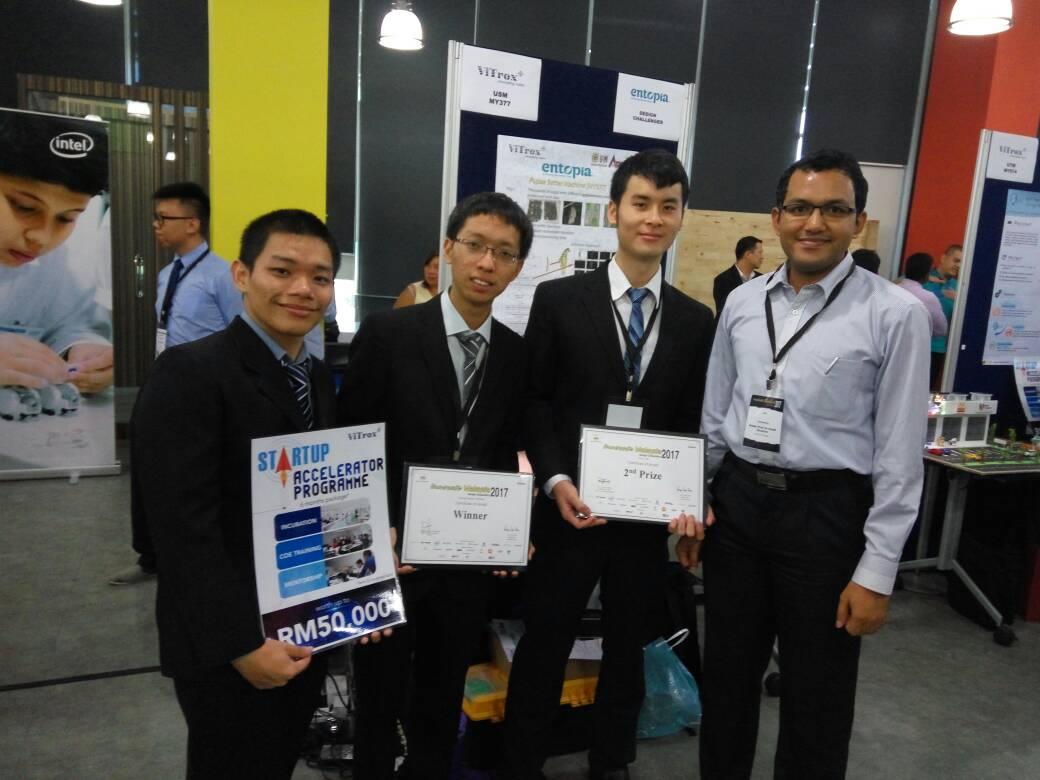
From left: Tang Khai Luen , Ooi Yoong Khang, Cheong Leong Kean and Assoc. Prof. Dr. Haidi
Ooi Yoong Khang, Cheong Leong Kean and Tang Khai Luen secured the ViTrox Track Second Prize and also won the Entopia Design Challenge with their project “Pupae Setter Machine”, under the supervision of Assoc. Prof. Dr. Haidi bin Ibrahim and Assoc. Prof. Dr. Khoo Bee Ee. The pupae setter machine is developed using artificial intelligence to identify the species of the pupae and sort it. The machine also has a robot arm to pick and place the pupae on the display bar and finally glue it.
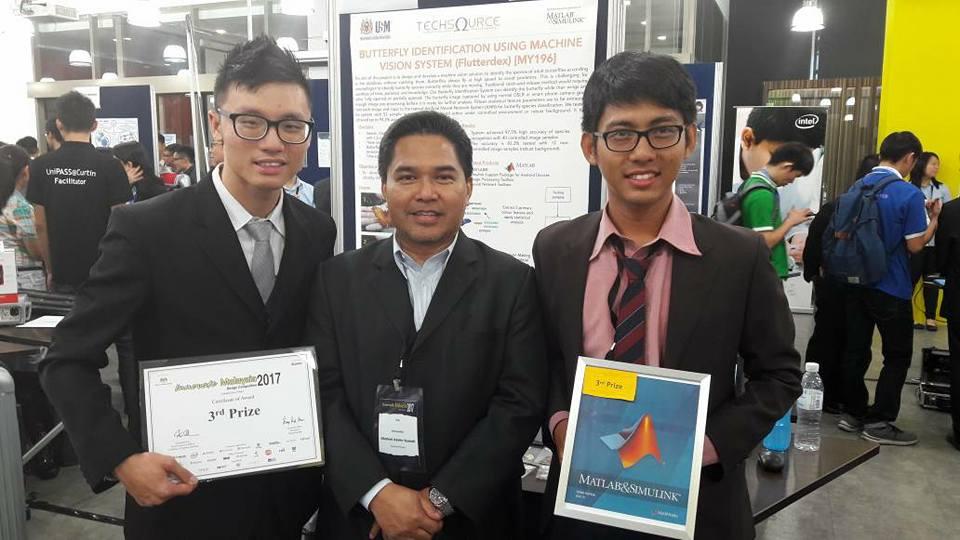
From left: Chan Zhen Yu, Assoc. Prof. Dr. Shahrel and Bernard Cheah Jun Kai
The project “Butterfly Identification Using Machine Vision System” won the MathWorks Track Third Prize. The project is developed by Bernard Cheah Jun Kai with his partner from School of Mechanical Engineering, Chan Zhen Yu, under the supervision of Assoc. Prof. Dr. Shahrel Azmin bin Sundi and Prof. Dr. Mani Maran Ratnam. Butterfly Identification system is an automatic machine viewing system which can correctly identify butterfly species. By using image processing and artificial intelligence technology, this system can identify the butterfly species from different orientations without catching them.
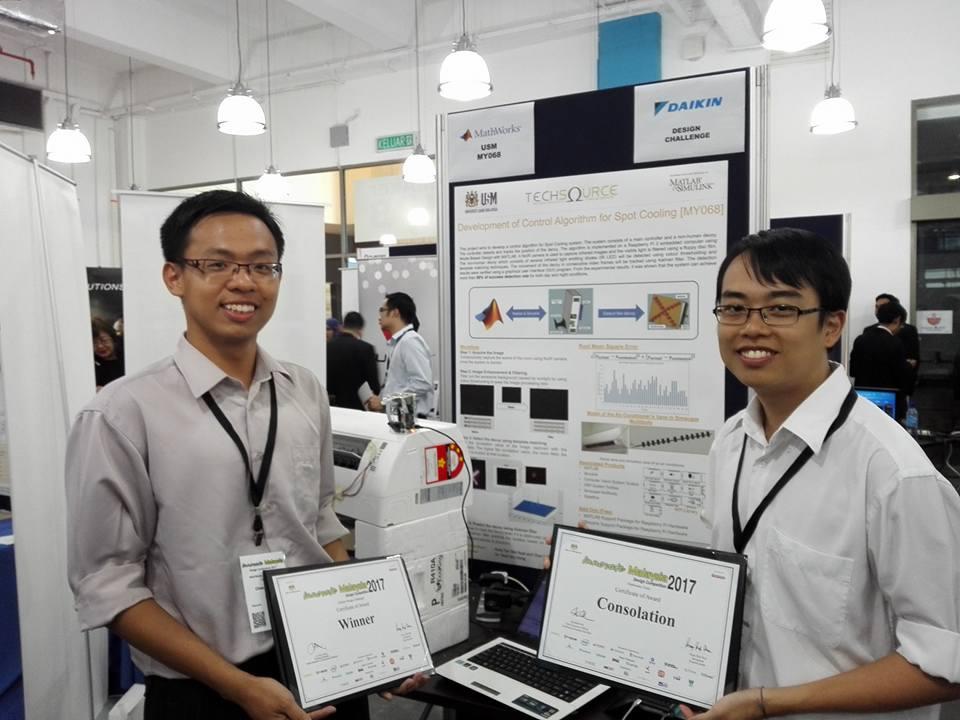
From left: Chan Hao Jie and Andy Tan Wei Keat
Andy Tan Wei Keat and Chan Hao Jie won the Daikin Design Challenge and MathWorks Track Consolation Prize with their project “Development of Control Algorithm for Spot Cooling” under the supervision of Dr. Teoh Soo Siang. Spot cooling is a concept to only cool down the desired spot, preventing wastage of energy by the air-conditioner. The developed control algorithm detects and tracks a decoy while controlling the vanes of the air-conditioner to divert the airflow to the decoy position.
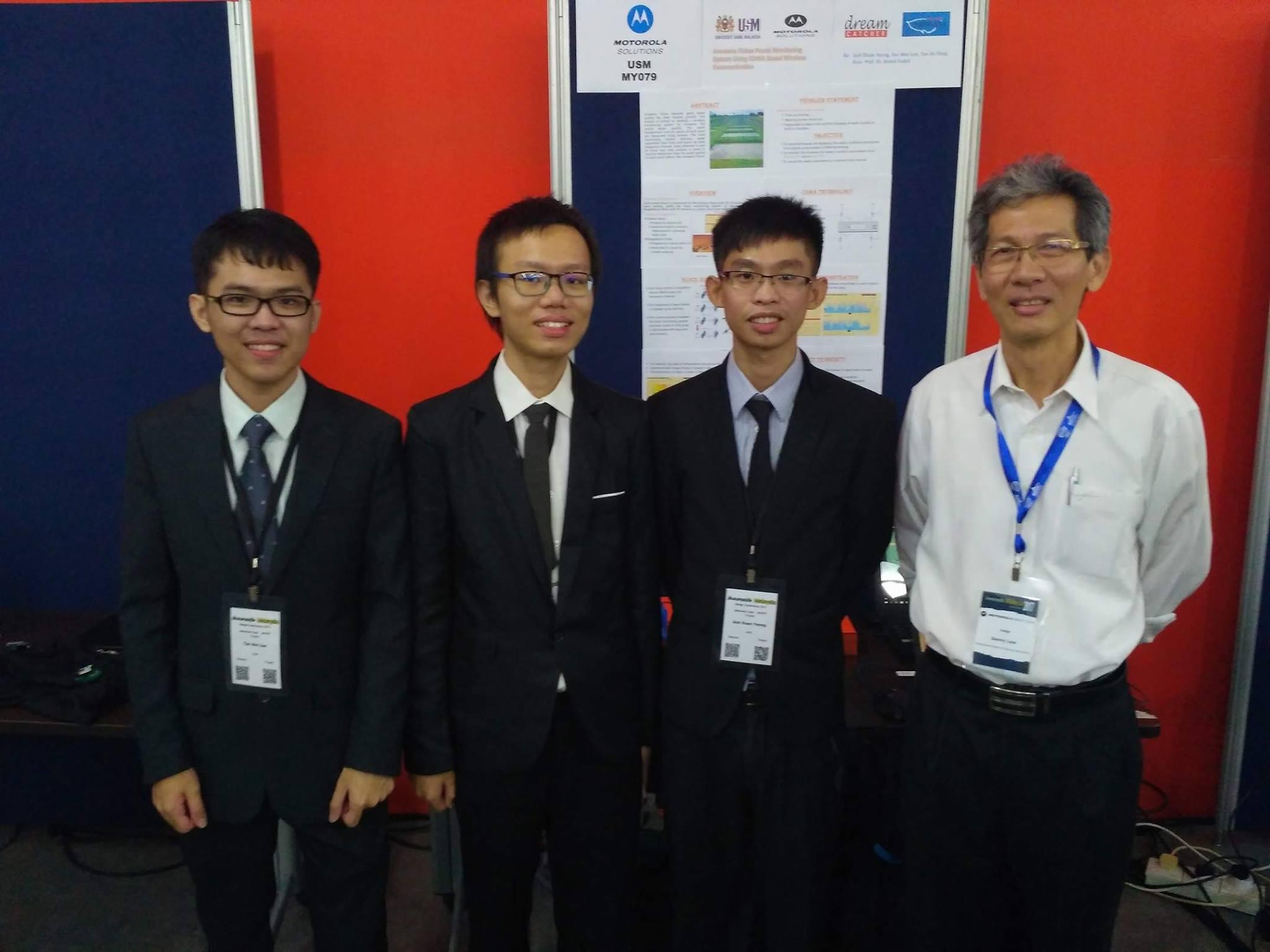
From left: Tan Wei Jun, Tan Jia Yiing, Goh Duan Yeong and rep from Motorola
Goh Duan Yeong, Tan Jia Yiing and Tan Wei Jun won the Motorola Track Consolation Prize with their project “Arowana Fishes Ponds Monitoring System Using CDMA Based Wireless Communication”. The team is supervised by Assoc. Prof. Dr. Mohd Fadzli bin Mohd Salleh. This project is a wireless monitoring system for Arowana fish ponds water quality as Arowana fishes demand good water quality for their healthy growth. The water temperature and pH values of each pond are measured using sensors. All sensor data are sent to the main monitoring system, and the data are sent to the cloud via the mobile network. Data analysis is done in the cloud to determine how the water quality of each pond affects the Arowana fishes.
The participants would like to express their gratitude to the School of Electrical and Electronic Engineering, USM for all the support given; from the resources required to develop the projects to the guidance of excellent supervisors.
